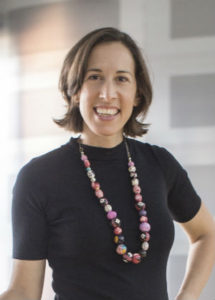Build a more effective organization with behavioral science

There is growing awareness for the benefits of applying behavioral science to real world problems. We have written before about how governments around the world have been using methods from behavioral science such as nudging in getting employees to save more for their pension, pay their taxes on time, get their yearly flu shot etc. Increasingly, more and more private companies are taking notice of the effectiveness of these methods, and leverage them to build great organizations. In this article we will outline a few of the areas where we have seen behavioral science applied in organizations: talent management, operations, employee wellbeing and product design.
Recruiting the right talent
In the book Work Rules! Laszlo Bock, Google’s Senior VP of People Operations, tells how Google decided to do a study to determine whether the company was good at hiring. They looked at tens of thousands of interviews, how the candidate scored, and how they ultimately performed in their job. The result? They found zero relationship. “A complete random mess”. They decided to redesign their hiring process from scratch, to rely more on structured interviews instead of open-ended “tell me about yourself”-s. Behind this decision is an insight from behavioral science: in unstructured interviews, we shift from assessing the candidate’s competencies to hunting for evidence that confirms our initial impression. This is called confirmation bias. Google found that although most managers think they are great at interviewing, they actually need help. We are heavily influenced by cognitive biases, and structured interviews help us curb their influence.
Today many companies, Google included, leverage behavioral science in designing recruiting processes that make sure the company finds and hires the right talent. Some recommendations from behavioral science are to skip CVs in favor of a questionnaire, incorporate a mandatory task / work sample and learn to rely less on your gut feeling. There is so much more to say about this topic that we decided to write a separate article just about that. Here are also some practical tips from Harvard Business Review to keep you busy.
Making operations more efficient
Behavioral science can also help companies save money by making their operations more efficient. Virgin Atlantic managed to save $5.4 million on fuel costs by sending their pilots letters with personalized goals on behaviors that were related to fuel-saving, and a monthly feedback on how they were doing vs. their goals. The insight here was that goal-setting motivates people – and personalized goal-setting, coupled with feedback, motivates people even more.
Sometimes it takes more than motivation. Most of us know this problem: we have to commit to a timeline or costs for a project, and we end up needing more time and money to complete it. Whether we are talking about a document, a product launch or a large infrastructure project such as building a bridge or a tunnel – the planning fallacy is a universal phenomenon. It is the systematic underestimation of the resources involved to complete a project, and it is based on our natural inclination towards overconfidence in our abilities. Behavioral science can help counter this phenomenon, by proposing methods to make a more accurate planning, such as something called “reference class forecasting”, where we benchmark with similar past projects, rather than rely on guesstimates of our future abilities. By offering ways to create more realistic project planning, behavioral science can increase the chances of projects to being executed according to plan, without overspending of time or money.
Promoting employee wellbeing
Having free snacks at the office might sound like a great idea for an employee benefit, but it can quickly backfire. The Chief Operating Officer of Yelp tells about how the employees all loved the free snacks when they were a young start-up in San-Francisco, until they realized that they were all snacking on unhealthy candy in the afternoon which was not making them feel good, healthy or happy. They decided to take the candy away. Behavioral science shows us that our environment plays a role in the decisions we make. Sure, we can encourage our employees to be healthy, but if we put free Snickers bars in front of them, we shouldn’t be surprised if they don’t take our advice.
Google famously experimented with different placement to their snacks in collaboration with behavioral scientists. They found that placing cookies and candy further from the drinks in a break room made employees 50% less likely to grab the unhealthy snacks when they got coffee. A smart design of the environment results in a nudge towards better decisions. Designing cafeteria-buffets in a way that follows advice from behavioral science, such as placing healthier foods first and at eye-level, has been shown to contribute positively to employee wellbeing.
Improving product design
Behavioral science can help companies design better products. Products that are designed around their users and their irrationalities and quirks. That “auto-play” feature Netflix has which makes the next episode play right after the last one? That feature is based on behavioral insights. Namely, our status-quo bias and an inclination to prefer inaction to action. Yep, we are pretty lazy, and if given the choice, we would rather not do anything. Netflix knows this so they save us the decision of whether or not to play the next episode. They decide for us, and we need to actively stop them (a lot less likely).
Spotify uses something called “Scarcity bias” in some of their most beloved features, like “Discover weekly”. It is a playlist curated to each and every individual’s music preferences, and it is only available for listening for one week at a time. The scarcity bias means that we appreciate more things that are scarce, or limited. When Spotify decided to make the “Discover Weekly” playlists available for longer – the scarcity was lost and users listened less. They quickly rolled this feature back.
Amazon proposes a list of books to consider whenever we search for a particular book, because “Customers who bought this item also bought”… This is based on the insight that we search for cues on what others are doing, especially if they are similar to us. This is called social proof and it is a powerful effect. All of these are examples of using behavioral insights to design products that connect with people.
We looked into a few areas where incorporating behavioral insights can help drive a better organization: Recruiting the right talent, making operations more efficient, promoting employee wellbeing and improving product design. There are many others. Behavioral science is an ever evolving field, and there are new studies published every day. We love bringing the latest insights to the organizations we work with. Is your organization facing a challenge that you would like some behavioral-science-fueled advice on? Write us!
Want to hear us talk more about how to use behavioral science to build more effective organizations? Check out the preview of our online course “Get behavioral science to work for you”, at the bottom of the course page.
You can also download our free and easy-to-use Introductory Guide, which introduces the foundations of the field for people who want to work with behavioral science and nudging in practice.
—

Nurit Nobel
+46 76 191 71 34
I want to learn more!
We hear you. If you’ve already read our post about behavioral economics in practice, then here’s a list of books, TED talks and other online resources. You are also welcome to sign up to our newsletter, where we give you relevant news and links on behavioral economics.
I’m convinced that behavioral economics can do wonders for me. Now what?
Contact us and let’s talk about how we can help you get going.
DISCLAIMER
FOLLOW US
CONTACT
Web Design: Sharp Studio
Copyright Impactually 2020
